
Choreography by George Balanchine, © The George Balanchine Trust.
© Sasha Iziliaev. (Click image for larger version)
Miami City Ballet
Program A (14 April): Symphony in Three Movements, Sweet Fields, Symphonic Dances
Program B (15 April): Heatscape, Viscera, Bourrée Fantasque
★★★★✰
New York, David H. Koch Theater
14, 15 April 2016
www.miamicityballet.org
davidhkochtheater.com
Miami on the Hudson
New York audiences and the Miami City Ballet have taken to each other like sun and salt air, and it’s easy to see why. The company feels familiar, like a different branch of the same family tree. The family is the large brood fathered by the choreographer George Balanchine. His DNA lies at the core of both Miami City Ballet and New York City Ballet. It is not hard to spot the common traits: speed, urbanity, crisp musicality, lightness.
But there’s something different about this company as well, a different accent. The Miami troupe, which is being presented in New York by the Joyce Theater Foundation, brings a sunniness, softness, and sense of cohesion and esprit de corps to its dancing that is all its own. There are dancers who impress more than others, but the overall feeling is of a whole that is greater than its individual parts. Everyone goes for broke. Even the New York City Ballet orchestra, under the baton of Miami City Ballet conductor Gary Sheldon, is playing with renewed vigor. The volume has been turned up several notches.
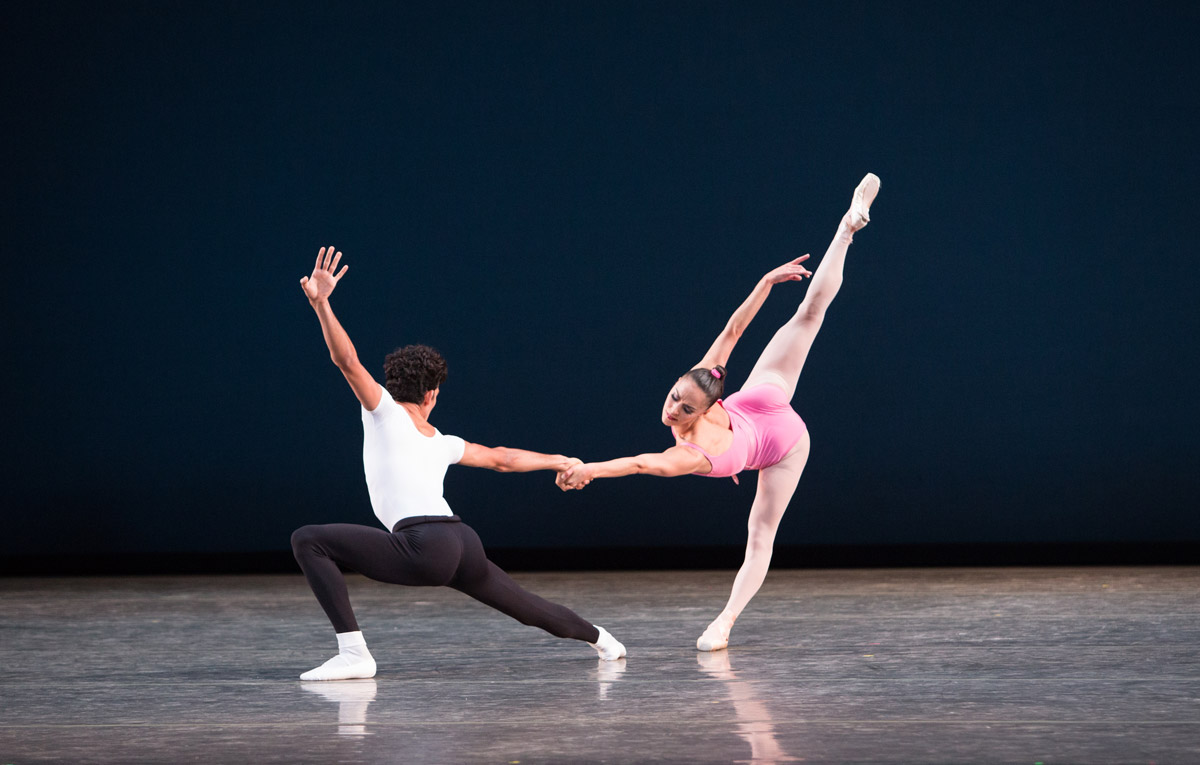
Choreography by George Balanchine, © The George Balanchine Trust.
© Sasha Iziliaev. (Click image for larger version)
After opening on Wednesday with a double-header composed of Balanchine’s Serenade and Alexei Ratmansky’s Symphonic Dances, the company continued its run with two additional mixed bills. The Thursday program consisted of Symphony in Three Movements, by Balanchine, and Sweet Fields, by Twyla Tharp, and closed with another performance of Symphonic Dances. Friday’s bill opened with Justin Peck’s Heatscape, followed by Liam Scarlett’s Viscera, and ended with Balanchine’s charming and seldom-performed 1949 ballet Bourrée Fantasque. Heatscape and Viscera were created for the company in 2015 and 2012 respectively. The Tharp, originally made in 1996, came into the repertory last year.
The pinnacle of the run may have been Symphony in Three Movements, with its aggressive, competitive outer movements framing one of Balanchine’s most stylized, exotic pas de deux. The diminutive Nathalia Arja, whose jumping contest with Kleber Rebello opens the ballet, looked electrified, her limbs flying in all directions. Patricia Delgado and Renan Cerdero gave a delicate, almost tender reading of the pas de deux, reinterpreting its mannered partnering and orientalist touches – flexed feet and splayed fingers – as a kind of hyper-refined mating ritual. The ending, with its mysterious semaphores and crouched poses, was almost frightening.

Choreography by Twyla Tharp, © Twyla Tharp.
© Daniel Azoulay. (Click image for larger version)
Some of the power of Tharp’s Sweet Fields, inspired by the simplicity and purity of the Shakers (and set to recordings of Shaker hymns), is lost when it is performed in a large hall like the Koch. But how relaxed and free the dancers look in it. The work itself is a marvel of simplicity, built out of a small number of motifs: running, shuffling, arm-swinging, rolling, wiggling, the offer of a helping hand. Tharp combines and re-combines these building blocks, looping them together in the end in a grand fugue. In one section, a funeral cortege carries a man aloft, flips him over, lowers him to the ground, picks up another man, and so forth. Death is universal, it touches us all. The genders are separated, but in the last hymn, the dancers become a community, as utopian and fluid as the free-flowing white costumes, by Norma Kamali.
Ratmansky’s Symphonic Dances, created for the company in 2012, is a fascinatingly dark, multi-layered ballet that reveals yet more layers on second viewing (first viewing). It is remarkable how much detail, and how many shades of emotion, this choreographer can pack into a single work. In comparison, Peck’s Heatscape and Scarlett’s Viscera feel somewhat flat, though each is appealing in its own way. They would probably have more impact if performed on separate programs. The Peck is youthful and furiously fast-paced; it begins with a line of dancers running forward to form a geometric freeze at the very edge of the stage. Behind them looms Shepard Fairey’s elaborate, tattoo-like backdrop, in luminous shades of red and brown. One dancer, Renan Cerdeiro pops up and launches into a breathlessly spinning solo. The energy never lets up, driven by Bohuslav Martinu’s Concerton No. 1 for Piano and Orchestra, brilliantly played by the pianist Francisco Rennó. The music is complex, with a baroque-sounding melody overlaid with sometimes dissonant washes of sound. At times the choreography is almost overwhelmed by its score.
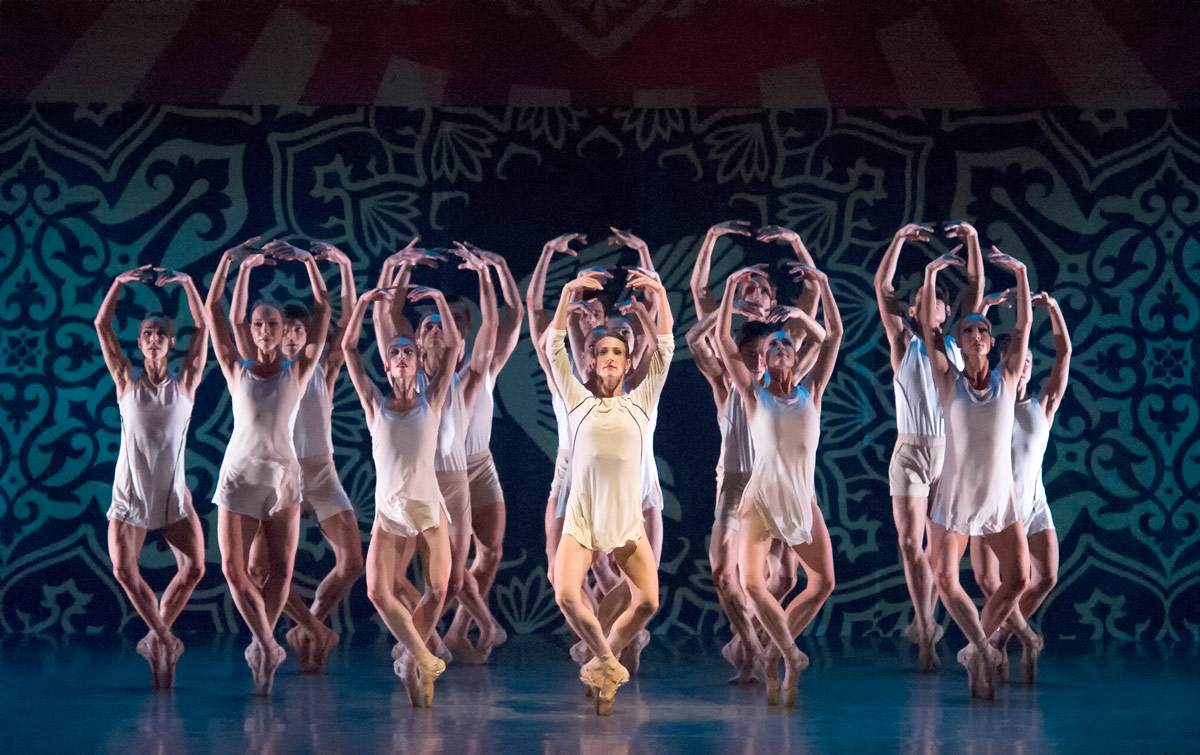
© Gene Schiavone. (Click image for larger version)
Nevertheless, as usual with Peck, the choreography overflows with ideas: dancers slide on their pointes, there are references to Balanchine’s Apollo and Concerto Barocco, and he fashions endlessly clever transitions. One pas de deux, for Tricia Albertson and Kleber Rebello, erupts into a an almost impossible-to-follow frenzy of steps. Albertson – leggy, Amazonian, impressive – is uncontainable, and yet Rebello somehow manages to keep her from flying off the stage. The men in this company all seem to be dependable partners. Twice, he flings her into the air, eliciting gasps from the audience. If anything, Heatscape is perhaps a little too clever, too energetic, too frenzied. Peck could hold back just a little.
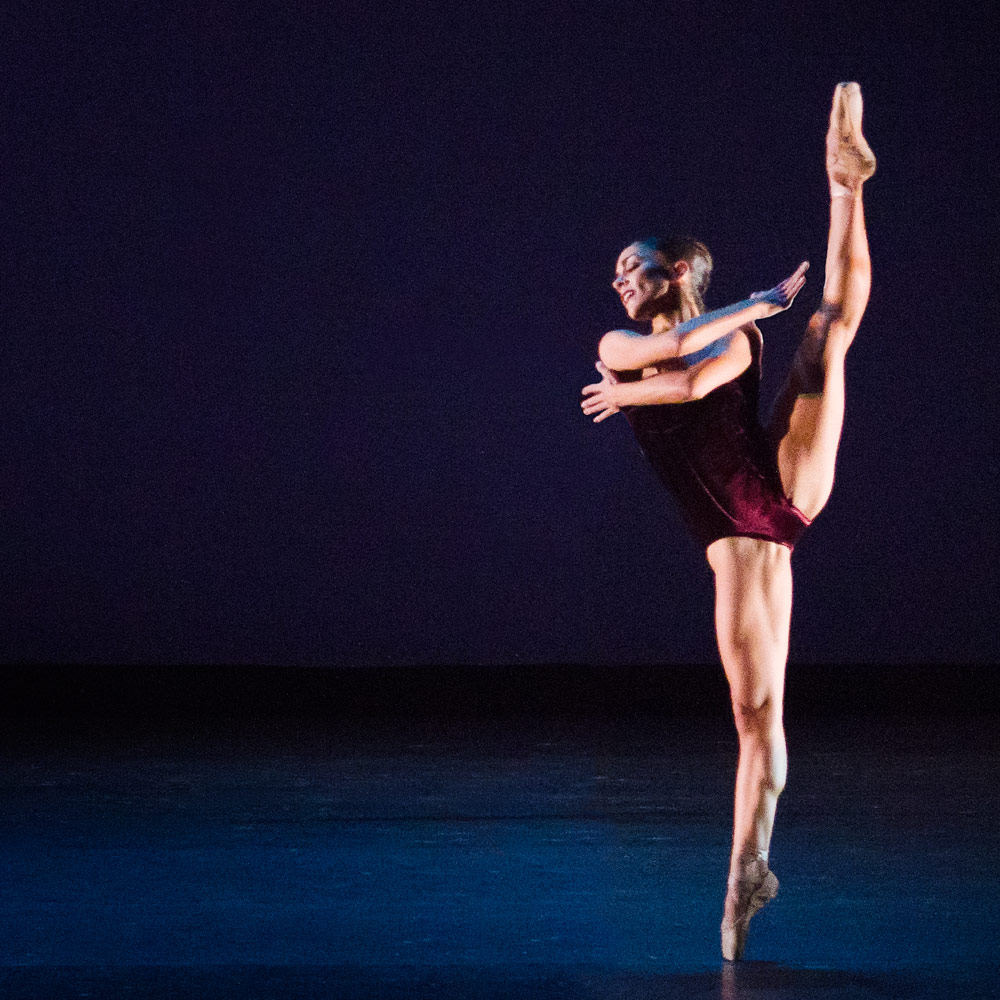
© Kyle Froman. (Click image for larger version)
On Friday, it was followed by Scarlett’s Viscera, the young Briton’s first ballet for an American company. Like Peck, he went for broke with the Miami dancers, using a big, virtuoso piano concerto, by Lowell Lieberman. It is more vigorous than any other Scarlett ballet I’ve seen, less reliant on atmosphere. Jeanette Delgado is the central figure; confidently, almost nonchalantly, she whips off spins and balances, digging into the movement with her back and shoulders. The most striking section, though, is the pas de deux Scarlett created in the quiet second movement, danced here by Jennifer Carlynn Kronenberg and Carlos Miguel Guerra. Both are retiring at the end of the season. They fold over and around each other like origami; he lifts her up and over his back until she hangs upside down, like a bird poised to dive into the water. She looks as if she were suspended in the air.
Bourrée Fantasque may not be top-drawer Balanchine, but it makes for a festive closer, with its prancing ladies with fans, waltz maidens, and whirling polonaise dancers. (The music is by Emmanuel Chabrier.) A little bit more wit might make the first, pratfall-filled section, feel a little less silly, but who knows; it may just be hopelessly dated. Simone Messmer makes an elegant and elusive valseuse in the second movement. I love how the other women mark the time by drawing an arc with their upper bodies, their arms held up en couronne; they look like figures on a clock. But the best thing about Bourrée Fantasque is the ending. The huge cast forms an enormous gyrating wheel that fills the whole stage, with Messmer, propped on her partner’s shoulder, in the middle. It’s irresistible – one of Balanchine’s applause machines.

Choreography by George Balanchine, © The George Balanchine Trust.
© Gene Schiavone. (Click image for larger version)
And, it must be said, the Miamians know how to give a good show. This visit, which continues through the weekend, has been a joy. Catch them if you can, and let’s all hope they’ll be back soon.












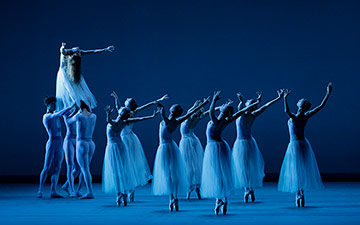
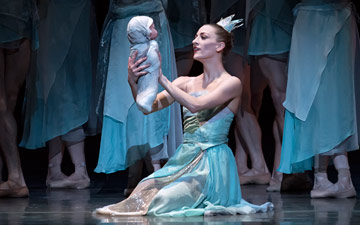
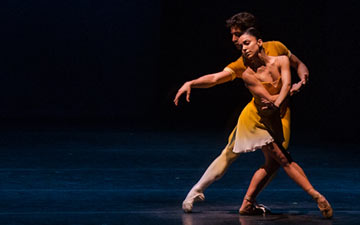
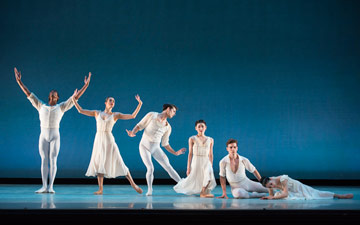
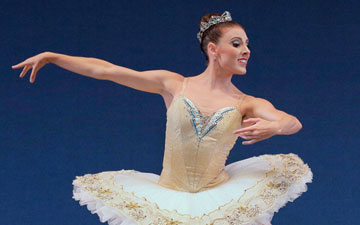
You must be logged in to post a comment.